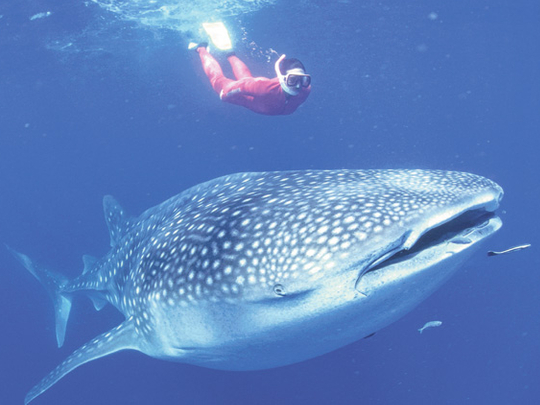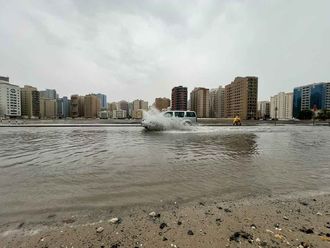
Dubai: Frequent divers in the UAE and Oman have at least one common goal: to spot a whale shark.
And over the years this goal has been achieved on a near-weekly basis. Now, research is being done to find out why exactly these gentle giants favour the Arabian Gulf, something of a cul-de-sac on their migration route through the Indian Ocean.
David Robinson, a marine biology doctorate student from the UK, set about finding answers to such questions after the first 2009 Arabian Seas Whale Shark Symposium in Fujairah.
"There had been no significant amount of scientific research carried out on whale sharks in the Arabian Gulf or Gulf of Oman," he said. A major reason for Robinson to launch the Shark Watch Arabia research programme as part of his PhD with the Heriot-Watt University.
He sought to investigate the ecology of whale sharks in the Arabian Gulf and the Gulf of Oman.
"There certainly are whale sharks in this region, just how many, when and why they occur is still a mystery and questions that the project aims to answer," said Robinson.
While there have been newborns confirmed from offshore Pakistan and Oman, which suggests that the Northern Arabian Sea may be home to mature females that are rarely seen at other study sites throughout the world, there is a lot of speculation about the region and why the sharks are here.
No confirmation
"Nobody even knows if in fact whale sharks have defined breeding or birthing grounds. To my knowledge there is no evidence to suggest that whale sharks give birth in the Arabian Gulf.
"As far as I am aware there has never been a confirmed neonate found in Gulf waters," he said.
"The project only started in June of this year but hopefully after a couple of years of data collection I will be in a better position to answer [why whale sharks enter the Gulf]; I simply don't know why they are here….yet."
Catching sight of a whale shark emerging from the blue depths of the Musandam and photographing it is key to the project's goal of identifying individual animals.
The spot pattern on each whale shark is unique, like a human fingerprint, said Robinson, and when photographs are uploaded onto the project's website, software that uses specific algorithms to look at the distance between each spot helps differentiate between each whale shark. "With the right photograph, you can tell the difference between individual sharks. The area located behind the gills and above the pectoral fin … is the area used all over the world and thought to be the most stable," he said.
So far 50 whale shark encounters have been recorded in the region and 23 individual sharks have been identified, in just four months. Thirty-six of those encounters have been since June this year and more encounters are being reported.
A satellite tag sponsored by Le Méridien Al Aqah Beach Resort was ready to be deployed on a suitable whale shark last week - however no whale sharks showed themselves.
How to help
If you encounter a whale shark in the region, please report the sighting via www.sharkwatcharabia.com












